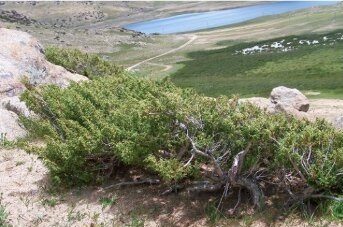Alpine regions on the Tibetan Plateau are sensitive to climate change, however, little is known about their long-term hydroclimate variability due to short instrumental records.
A research team from the Institute of Tibetan Plateau Research (ITP) of the Chinese Academy of Sciences established a 537-year standard shrub-ring chronology by cross-dating living and dead Wilson juniper (Juniperus pingii var. wilsonii) shrubs sampled nearby the Nam Co Lake (4,725 m a.s.l.), on the south-central Tibetan Plateau.
Trees are absent in this area, where patches of alpine shrub species can survive. However, very few alpine shrub species there provide a rare opportunity to retrieve changes of alpine ecosystem by shrub-ring analysis. Among alpine shrubs, Wilson juniper is widespread throughout the south-central Tibetan Plateau.
The established shrub-ring width chronology is one of the world’s longest shrub-ring chronologies. Shrub-ring chronology from 1605 to 2010 was then used to reconstruct mean May-June drought severity (Standardized Moisture Anomaly Index).
Two long-term dry spring periods (1637-1683 and 1708-1785) occurred during the Little Ice Age (LIA) implies that cold temperature may slow down hydrological cycle.
This study, published in Geophysical Research Letters, highlights the importance of alpine juniper shrubs in understanding hydrological cycle in dry, continental alpine treeless areas.
The research was supported by the Second Tibetan Plateau Scientific Expedition and Research Program (STEP) and the National Natural Science Foundation of China.
The shrub-ring chronology and reconstructed SZI series data are available at the National Tibetan Plateau Data Center.
Read the paper: Geophysical Research Letters
Article source: Chinese Academy of Science
Author: Li Yuan
Image credit: Close-up view of Wilson juniper shrub patches around the Nam Co Lake and hydroclimate (Standardized Moisture Anomaly Index) reconstruction from 1605 to 2010 (Credit by ITP)






